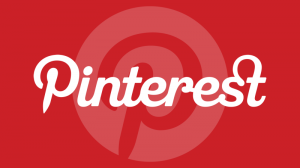
The age-old question comes up time and time again: should we keep our customer community private or public? There’s always anxiety in having “dirty laundry” aired out publicly, with Google’s search engine robots crawling them for the whole world to see. On the other hand, transparency is the ultimate trust currency and can help your organization win more business. Which is best?
Customer community, public or private?
A customer community can be public, viewable by anyone or it can be private, behind a login only made available to paying customers. What are some things to consider if you’re launching a customer community but unsure about making it public or private?
Member Behavior
Your customers have has a self-interest in collectively developing a community. Once built up, it becomes a ‘public good’: a useful resource available to your customers but possibly also useful to customers of competing brands or the general public.
When you create a public good, you get ‘free riders’, or as we call them in the community biz, lurkers. They consume but don’t contribute. An open community will attract many more lurkers than a private one.
Do lurkers create a disincentive to participating members? There’s no economic problem here since there is no cost to participating community members or a finite resource being consumed and will ‘use up’ the community.
What about the fear of posting something in public? A study done on an employee community found that many were hesitant to participate for fear of being criticized and misleading the community while at the same time recognizing the public good that could be created. Community ‘stage fright’ might be a bigger problem in a public community.
Transparency
Your community is going to reveal the good, bad and ugly about your products and services. Some people advocate for full transparency as a way to build trust with the public. Proponents or transparency also point out that customers are posting about anyway on social media, independent forums and review sites.
Opponents of transparency usually want to control negative information and keep it from prospective customers and competitors. One of the better arguments against transparency is that it can curtail risk taking. One our customers makes its support forums public but runs separate private forums for products that are in beta.
Community as a Value Add
We sometimes see a company offer up the community forum, or a section of it as feature for paying customer where they can exchange best practices. On the one hand, if you’ve created something with economic value, it’s fair to make people pay to use it. On the other hand, making the community a public good might help you more by promoting your entire market category. For example, Big Green Egg, a brand of kamado style charcoal barbecues has a thriving public community that is surely visited by owners of competing kamado barbecues. The greater opportunity is showing gas BBQ owners the superior results they could be getting.
Liability
It’s necessary to mention that in some cases, a private community makes it easier to ensure that all users agree to terms of use and that all actions, even viewing pages are logged. This is sometimes the case for business in sectors with a high compliance burden.
Technical Considerations
If you have a large number of customers, the community forum software itself becomes a product that needs to be supported and it’s rare to see a company that has millions of customers with a private customer community. Requiring customers to register or login to access the community can result in unwanted support tickets. A good registration system or well-implemented single-sign-on from your website to your community can reduce these problems but as the customer count grows, it only take a fraction of a percentage point to create costs.
There are strong arguments for a private, open and public or hybrid approach. As usual, it depends on your unique circumstance.
Digital & Social Articles on Business 2 Community(96)
Report Post





